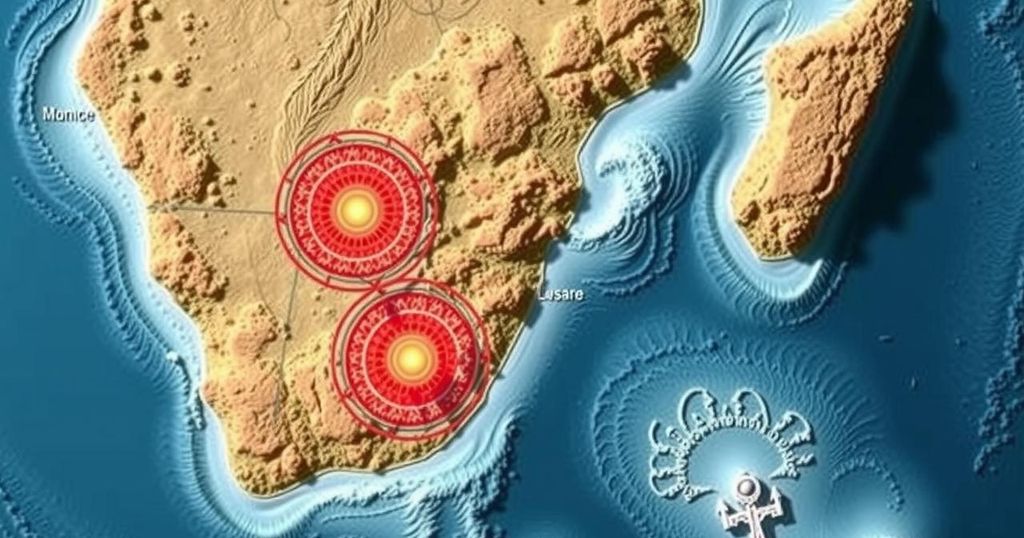Magnitude 5.3 Earthquake Strikes Northern Cape, South Africa

A magnitude 5.3 earthquake struck Northern Cape, South Africa, on December 22, 2024, causing widespread tremors felt in regions up to 400 kilometers away. No significant injuries or damage were reported, but discussions around preparedness and geological implications have become paramount in the wake of this unusual seismic activity.
A magnitude 5.3 earthquake struck the Northern Cape of South Africa on December 22, 2024, at 2:51 AM local time. Centered approximately 101 kilometers west of Brandvlei, the tremor was felt across a wide area, including regions as distant as Cape Town—about 400 kilometers from the epicenter. The U.S. Geological Survey and the South African Council for Geoscience confirmed the quake occurred at a depth of 10 kilometers. Residents reported their experiences online, noting feelings of fear and confusion as aftershocks followed the main event.
Among the affected, local farmer Drienie Visser described the moment of the earthquake: “Our whole house shook and I thought it would fall apart. That was the worst earthquake we’ve ever had.” The South African Council for Geoscience, having recorded ten aftershocks within twelve hours, indicated a significant uptick in seismic activity in the region, which historically has been relatively quiet.
Despite the potential for disaster, initial assessments revealed no immediate injuries or extensive property damage. However, CGS spokesperson Mahlatse Mononela cautioned that such seismic activity is unusual for the Northern Cape and emphasized the importance of investigating the earthquake’s longer-term geological implications. Community responses vary, with locals expressing familiarity with seismic events yet acknowledging a heightened awareness of the region’s geological vulnerabilities.
The quake has incited discussions about earthquake preparedness among residents, particularly in light of the agricultural challenges posed by extreme weather. As one resident noted, there is a belief among local communities that the shaking could be linked to environmental changes, such as anticipated rain. The CGS has committed to monitoring aftershocks and enhancing public education on the risks associated with earthquakes in regions not typically associated with high seismic activity.
While the recent earthquake may not have equated in severity with global seismic events, it has fostered a renewed conversation about the necessity for geological surveys and disaster preparedness in South Africa. The event has left an indelible mark on the affected communities and raised important questions about the future of their environment and safety.
The recent earthquake in Northern Cape serves as a critical reminder of the risks associated with seismic activity, even in areas typically characterized by low seismicity. Such events can disrupt communities and lead to significant discussions on disaster preparedness. Historical data indicate that the region has experienced intermittent seismic events, but a quake of this magnitude has prompted a reevaluation of local geology and its potential implications for future seismic hazards. Consequently, there is an urgent need for public awareness initiatives to equip residents with knowledge and resources necessary in the event of seismic occurrences.
In conclusion, the 5.3 magnitude earthquake in Northern Cape has underscored the seismic risk present in regions that are not usually prone to such activity. While the immediate aftermath shows no significant damage or injuries, the event has prompted valuable discussions on community preparedness and geological monitoring. It is essential for local authorities and geological experts to strengthen education and safety measures to mitigate the impact of potential future earthquakes. The heightened awareness of seismic vulnerabilities is a crucial takeaway from this unsettling event.
Original Source: evrimagaci.org








